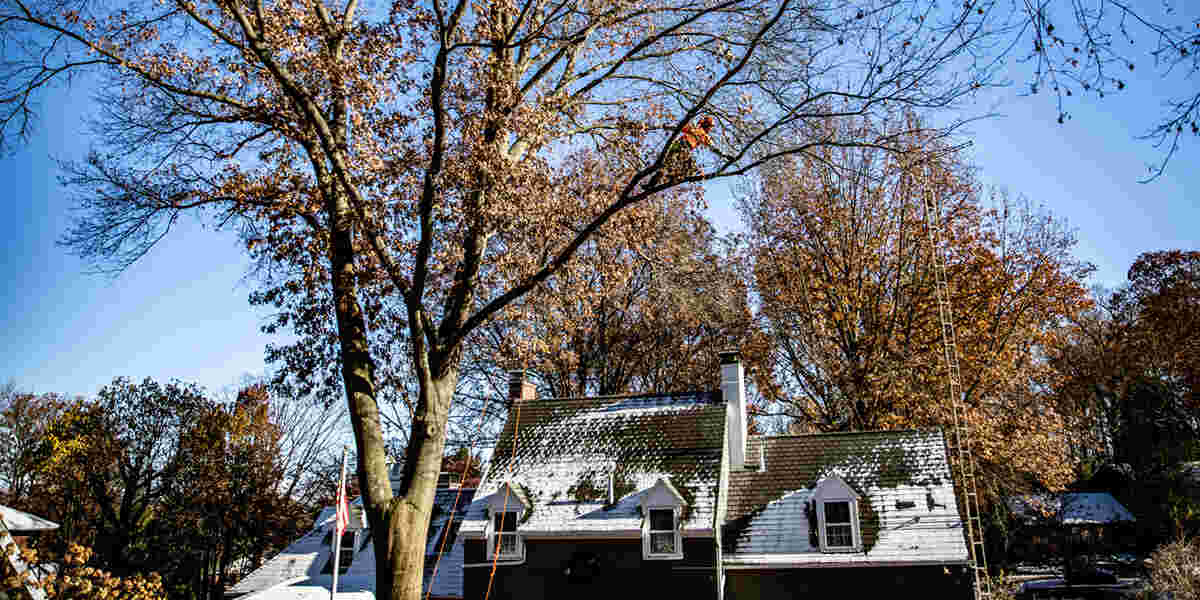Lakewood’s drastic temperature changes range from summer highs averaging 83 degrees to winter lows dipping into the 20s. While we don and shed extra clothing layers to acclimate and heat and cool our homes to protect the structure and everything within it (from piping to wiring), outdoor areas aren’t as lucky. Freezing weather may even leave you asking what causes a tree trunk to split vertically in Lakewood, OH.
No one wants to see large tree gashes reveal themselves during the spring’s thaw, but avoiding unsightly marks means understanding vertical trunk cracks and their origin. Below, our professional tree service in Lakewood, Ohio, explores vertical trunk split explanations and how to prevent these cracks altogether.

How To Identify Frost Cracks
After a long winter, have you ever noticed the development of long, vertical marks spanning your tree trunks? Sometimes, they appear as thin, shallow marks resembling knife markings; other times, they’re wider and several inches deeper with discolored bark.
Either way, one of the vertical tree trunk splitting factors includes freezing or highly fluctuating temperatures that vary from day to night, causing the outer wood layer to contract. The inner layers contract more slowly since they don’t come in direct contact with the radical temperatures. So it stays warmer longer, and as the top layer tightens over the still-expanded lower layer, the top layer rips.
You’ll especially notice cracks in the west and south-facing bark areas that receive the maximum sunlight that warms before the cold nights kick in. These areas see the most drastic temperature changes, causing a lot of give and take in elasticity.
Another of the causes of tree trunk vertical cracks is water absorption from precipitation and high humidity. Moisture leaves the inner layers wetter and expanded long after the outer layer compresses. But now that you know what causes a tree trunk to split vertically, do they heal themselves?
Do These Vertical Cracks Heal Themselves?
While frost cracks are relatively harmless, they encourage pests, diseases, and other infestations. That’s because the bark acts as a tree’s protective layer. When compromised, the tree becomes vulnerable to outside factors that infect or kill it. So it’s understandable to question if the factors leading to vertical trunk splitting do irreversible damage.
Fortunately, as trees come out of dormancy and notice a diseased or dying section of their trunk, their immediate response is survival, so they develop reaction wood. This new wood grows over the infliction, the additional layer reducing the chances of cracks reforming. Still, some trees may never fully heal, depending on their health.
What Can You Do To Better Protect Your Trees?
To keep this from happening again, you’ll want to do anything to protect your trees, including sealing current patches. But this affects the natural healing process and proves detrimental. Instead, give your tree what it needs to protect itself by making it healthy in the following ways:
- Irrigate and hydrate trees during dry seasons
- Add compost and slow-release fertilizer for tree nutrients during growing seasons
- Add two to four inches of ground mulch to protect the roots from freezing
- Let a professional trim and prune your trees
- Wrap the trunks in burlap as an added layer of protection
To Learn More About Tree Trunk Vertical Split Reasons and More, Contact Us!
Tree care isn’t easy, and you should ask plenty of questions to get the care requirements right. From “How much water does a tree need?” to “What causes a tree trunk to split vertically?” Petrarca Landcare Inc. has the answers. So call our licensed and insured team at (330) 933-0562 for assistance and to receive a free estimate!
